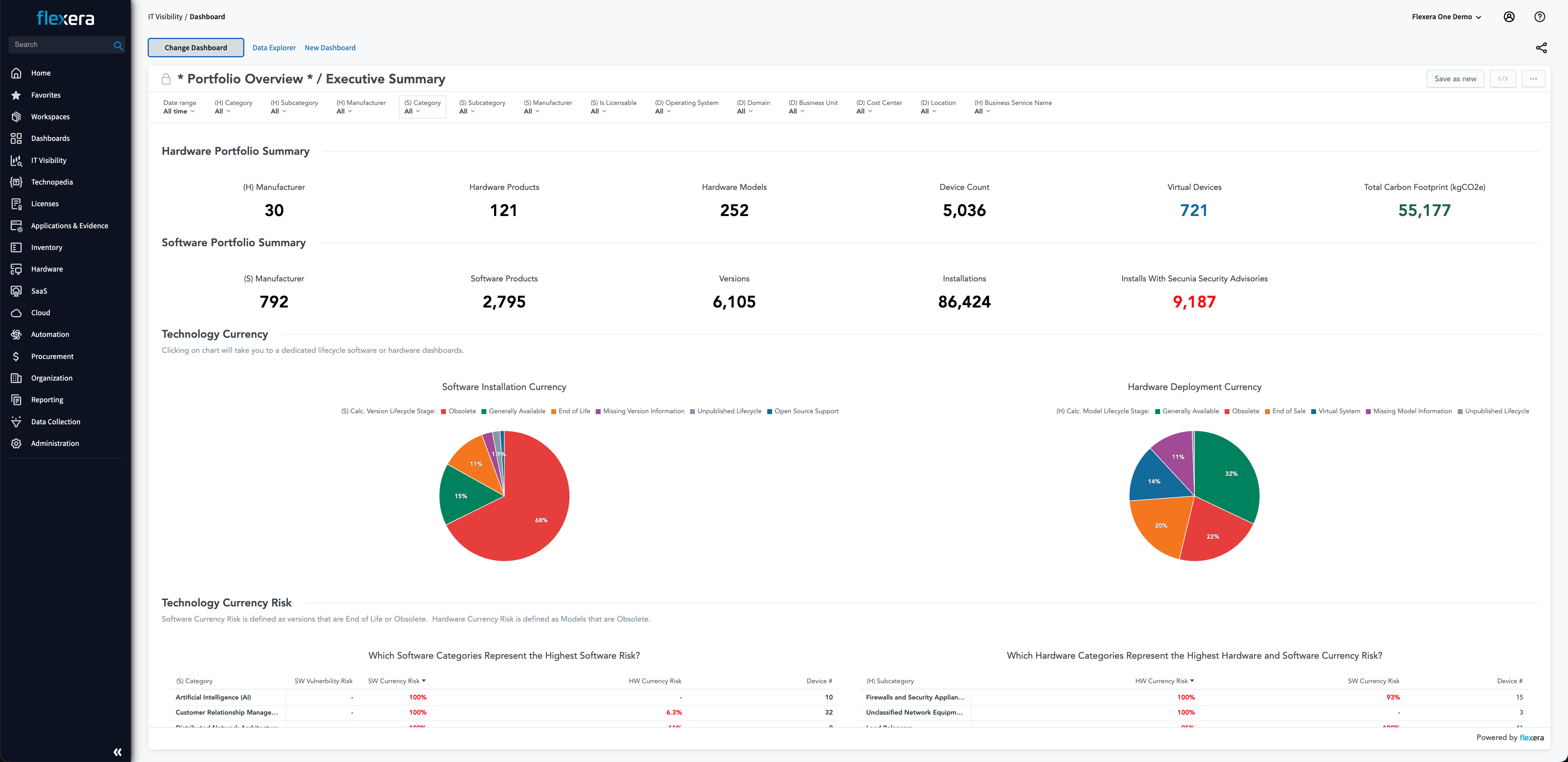Zuverlässige IT-Inventarisierung
Automatisierte, genaue Bestands- und IT-Assetdaten
Flexera hat Tausenden von Kunden geholfen, ihre hybride IT-Umgebung in kurzer Zeit zu inventarisieren. Auf dieser Grundlage erhielten die Unternehmen fundierte Daten für erfolgreiche Vertragsverhandlungen, konnten Herstelleraudits abwehren, Möglichkeiten zur Kostenoptimierung erschließen, die CMDB-Datenqualität verbessern und vieles mehr.
Empfohlene Lösungen
Automatisierte Asseterkennung in Ihrem hybriden IT-Bestand
IT Asset Discovery
ASSETERKENNUNG
Einfache Erfassung komplexer IT-Umgebungen
Die Gewährleistung zentralisierter Transparenz über den eigenen IT-Bestand stellt für viele Unternehmen eine enorme Herausforderung dar. Ein erster Schritt besteht in der Ermittlung aller unternehmensweit verteilten IT-Assets. Die Abhängigkeit von manuellen Prozessen ist dabei nicht nur ineffizient, sondern liefert auch ungenaue und veraltete Informationen. In der Folge sind Unternehmen unnötigen Kosten und erhöhten Risiken ausgesetzt. Sie müssen auf mehrere Möglichkeiten zur Inventarisierung Ihrer Umgebung zurückgreifen können, um IT-Assets und ihre Nutzung schnell zu erkennen. Dabei kann die vorhandene Infrastruktur mit vorgefertigten Integrationen in der gesamten hybriden IT-Umgebung genutzt werden.
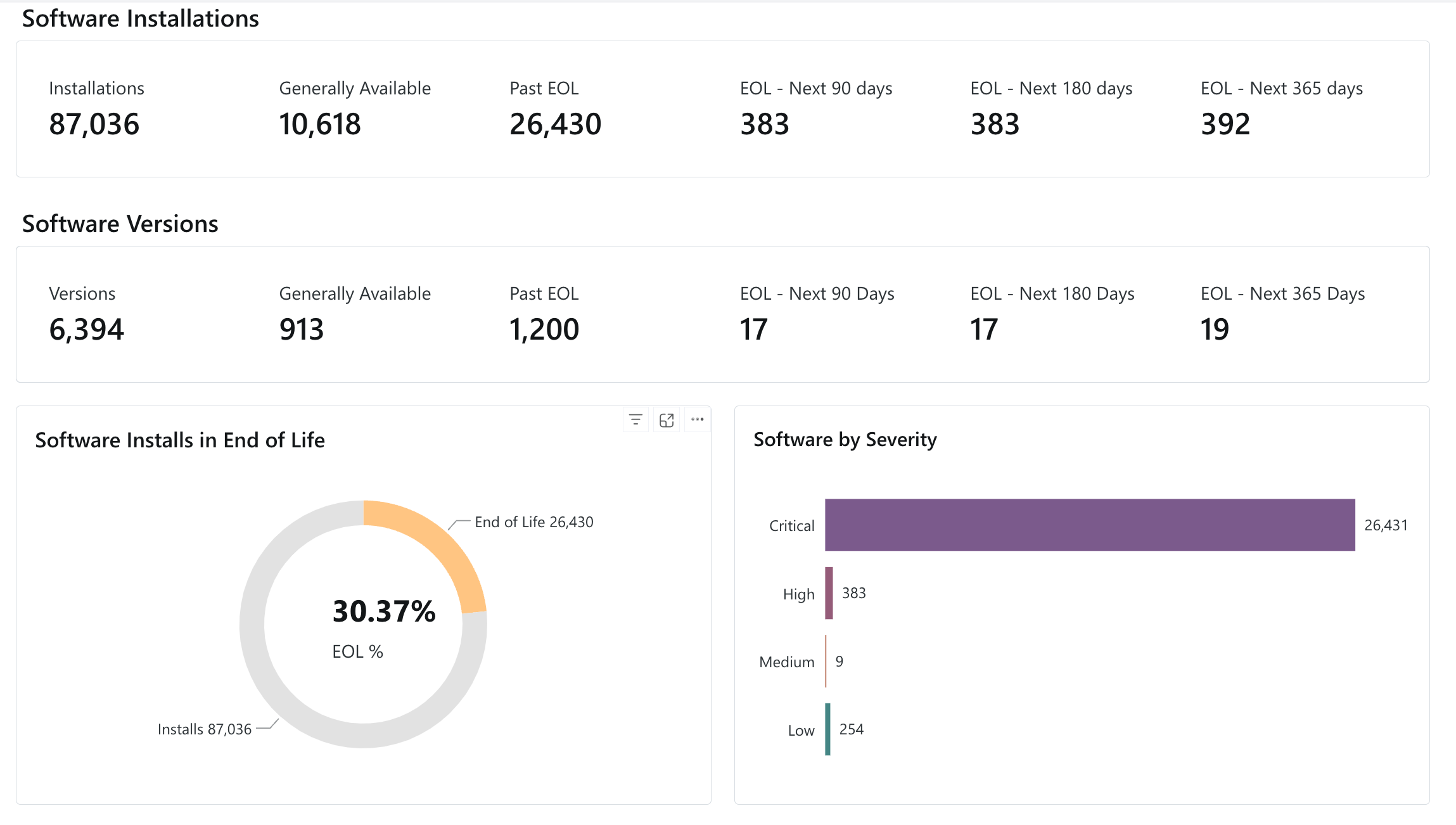
IT Data Normalization and Enrichment
NORMIERUNG UND ANREICHERUNG VON IT-DATEN
Effektive Nutzung erfolgskritischer IT-Marktdaten
Um finanzielle, behördliche oder nachhaltigkeitsbezogene Auflagen zu erfüllen, dynamischen Geschäftsanforderungen gerecht zu werden und sich vor Sicherheitsrisiken zu schützen, müssen sich Unternehmen besser aufstellen. Dafür sind sie auf einheitliche Daten angewiesen. Durch die Normierung Ihrer Daten sorgen Sie für eine gemeinsame Sprache für die gesamte Hardware, Software und SaaS-Ressourcen Ihrer Umgebung – mit eindeutigen Namen, Modellen, Versionen und Editionen. Eine sorgfältig kuratierte und aggregierte IT-Taxonomie ermöglicht eine fundierte Entscheidungsfindung und bessere Risikominimierung.
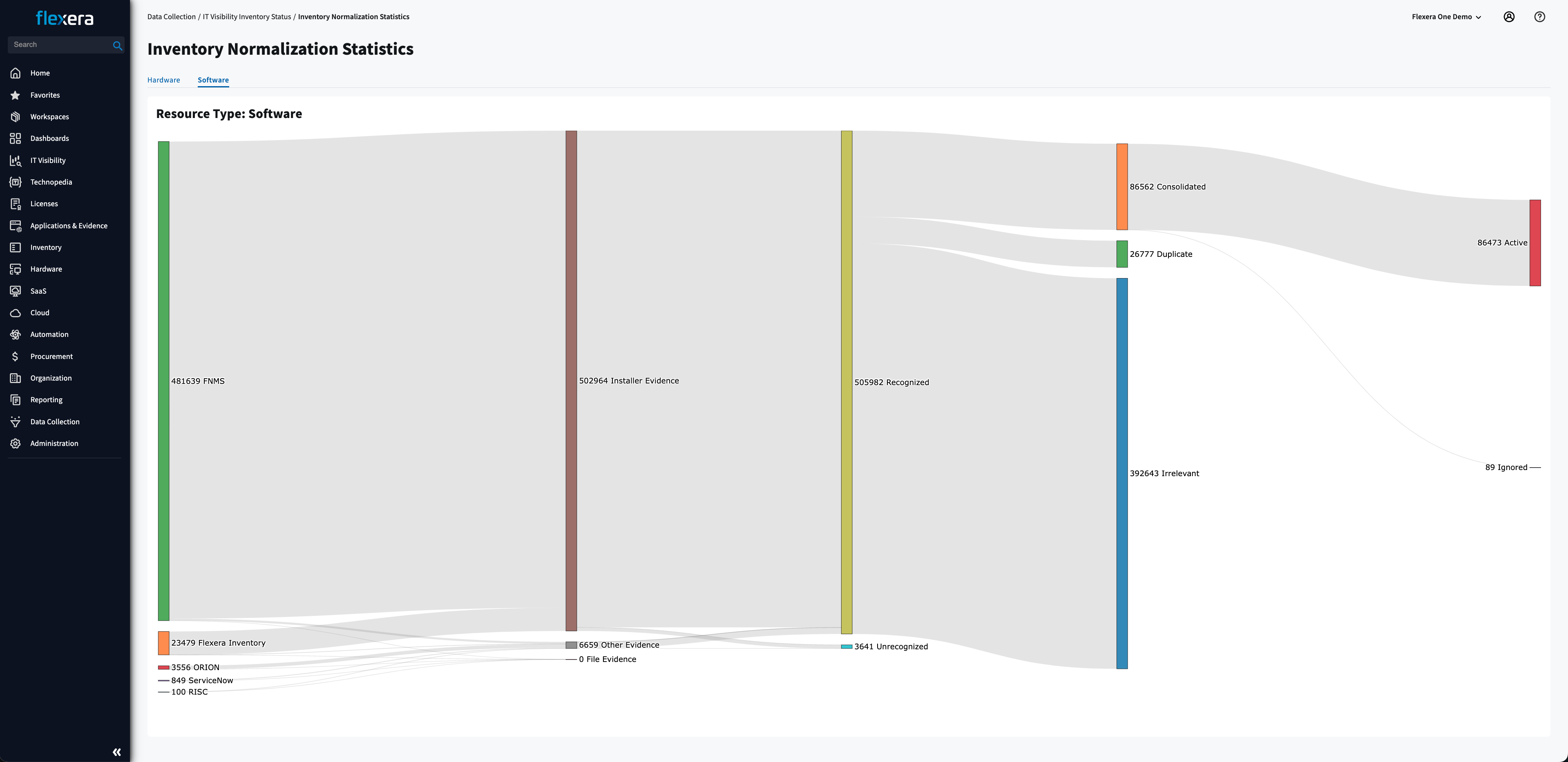
Business Service Mapping
BUSINESS-SERVICE-MAPPING
Erfüllung von Regulierungsanforderungen und Vermeidung kostspieliger Sanktionen
Ob es nun um die Verbesserung von IT-Service-Management und CMDBs, die Verbesserung der Sicherheit, die Schwachstellenbehebung oder die Planung der Cloudmigration geht: Um Risiken kontrollieren und den Geschäftserfolg fördern zu können, müssen Sie die Abhängigkeiten zwischen Ihren IT-Assets verstehen. Genaue Technologiedaten zu Ihrer Umgebung helfen Ihnen dabei, Prioritäten zu setzen und den Projekterfolg zu steigern. Für IT-Unternehmen ist es wichtig zu wissen, welche Business-Services von welchen Anwendungen abhängig sind.
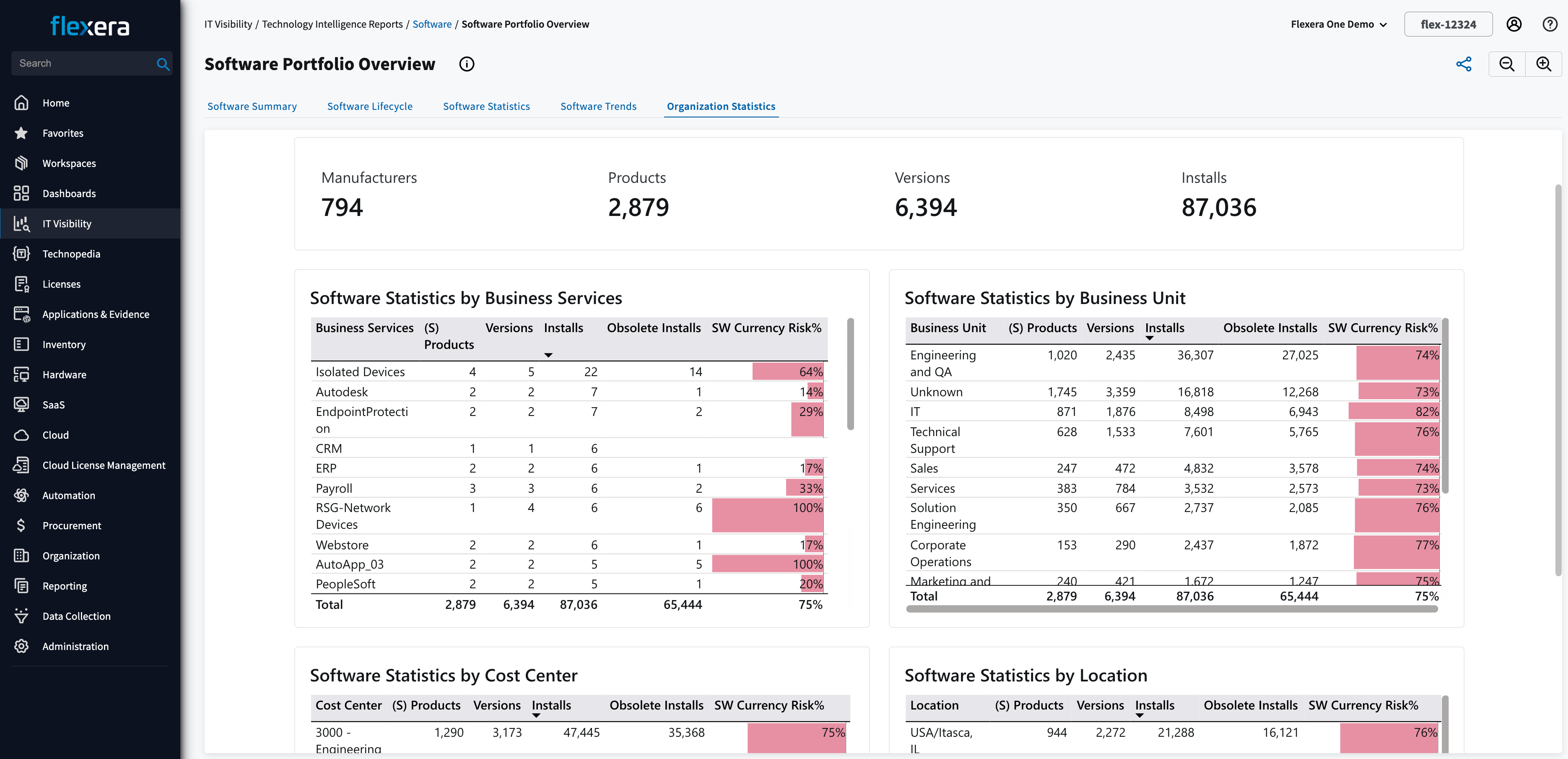
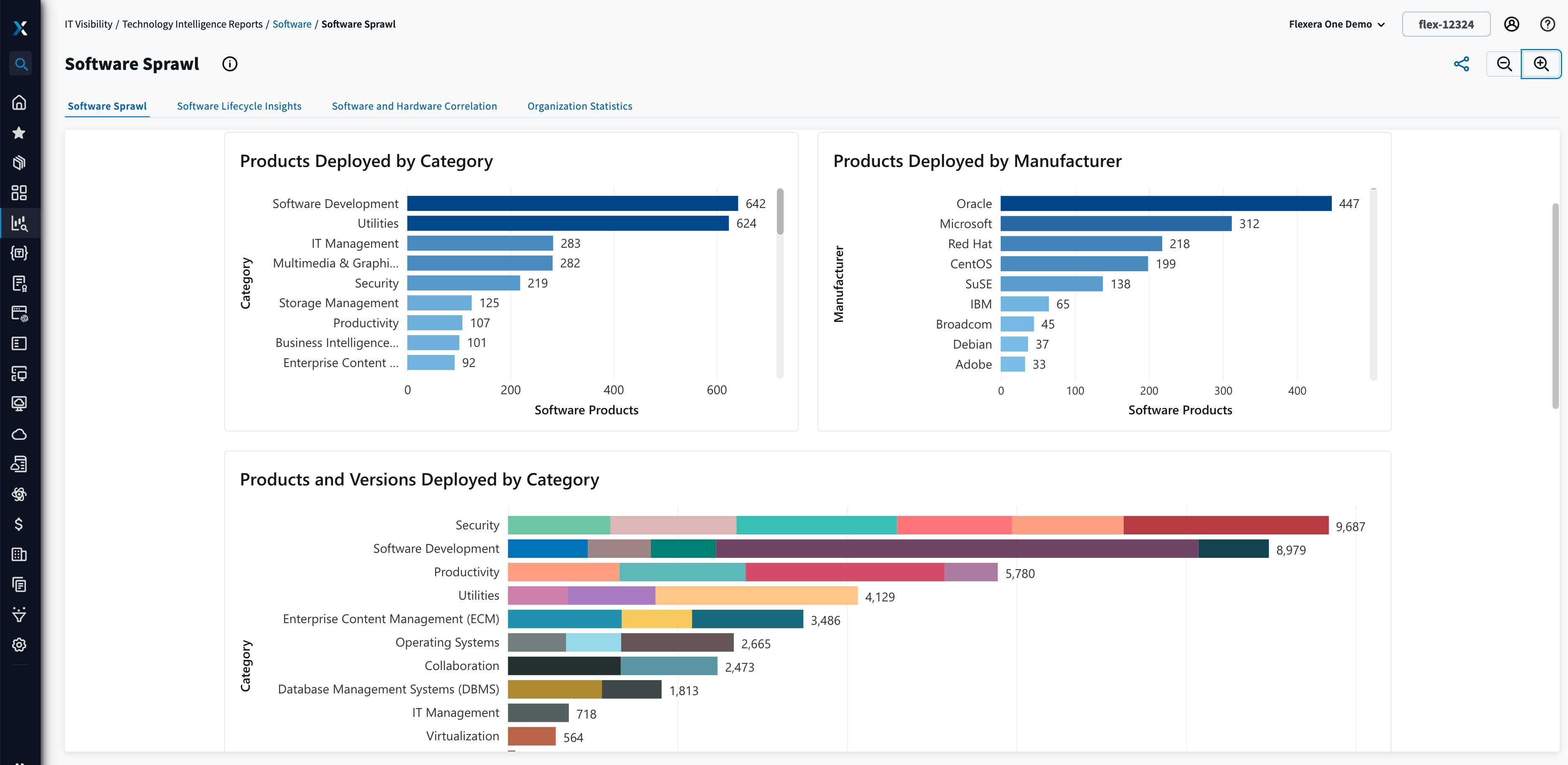
Zuverlässige Inventarisierung des IT-Bestands
Wertvolle Einblicke in IT-Umgebungen
Mit Flexera One vereinheitlichen Sie Ihre IT-Bestandsdaten über Systeme, Workflows, Berichte und Stakeholder hinweg. Unsere Datennormierung stützt sich auf Technopedia™, den größten und umfangreichsten Referenzkatalog für IT-Daten. Die Lösung liefert eine umfassende, kategorisierte Auflistung des gesamten Hardware-, Software-, SaaS- und Cloud-Bestands, schafft so Klarheit und stellt sicher, dass alle Ihre Systeme reibungslos miteinander kommunizieren können. Auf dieser Grundlage können Sie schnelle und fundierte Entscheidungen in Bezug auf Ihre Unternehmenstechnologie treffen.
Früher haben mir interne Audits regelmäßig Kopfschmerzen bereitet. Seit wir mit [Flexera] arbeiten, gehört das der Vergangenheit an. Dank des Selfservice-Ansatzes müssen Stakeholder die benötigten Informationen nicht mehr bei uns anfordern, sondern können eigenständig darauf zugreifen. Das hat unsere Handlungs- und Innovationsfähigkeit nachhaltig gestärkt.
Häufig gestellte Fragen (FAQs)
Die Datennormierung ist ein systematischer Ansatz zur Aufbereitung und Strukturierung von IT-Rohdaten, in deren Verlauf diese Daten zu einer konsolidierten, kategorisierten Auflistung von Hardware und Software umgesetzt werden. Dieser Prozess stellt die Einheitlichkeit, Genauigkeit und optimierte Transparenz von IT-Assets sicher und versetzt Unternehmen dadurch in die Lage, verwertbare Erkenntnisse abzuleiten, fundierte Entscheidungen zu treffen und den Überblick über ihre IT-Landschaft zu behalten. Die Datennormierung bildet einen Grundpfeiler für optimale IT-Governance und optimales Risikomanagement. Weitere Informationen finden Sie hier in unserem Glossar.
Eine CMDB (Configuration Management Database, Konfigurationsmanagementdatenbank) ist ein grundlegendes Repository, das in einem Unternehmen als Datensilo dient und alle Informationen zur IT-Umgebung des Unternehmens enthält. Diese Datenbank ist eigens für die Verwaltung von Konfigurationen konzipiert. Eine CMDB ermöglicht Ihnen, Daten Ihrer IT-Infrastruktur und Konfigurationsassets an einem zentralen Ort zu speichern. Weitere Informationen finden Sie hier.
Der wichtigste Unterschied zwischen ITAM und einer CMDB ist der jeweilige Zweck. Das ITAM wurde entwickelt, um Beschaffung, Implementierung, Wartung und Stilllegung Ihrer IT-Assets zu überwachen. Eine CMDB überwacht die Eigenschaften, Zuordnungen und Abhängigkeiten von Konfigurationselementen und schafft so einen Überblick über die Auswirkungen von Abweichungen und Ereignissen in Ihrer IT-Infrastruktur. Weitere Informationen finden Sie hier.
Beide Begriffe bezeichnen zwar Phasen, in denen der Support für ein Produkt ausläuft, doch sie haben jeweils unterschiedliche Bedeutungen:
- End-of-Life (EOL): Hierbei handelt es sich um das Datum, nach dem ein Produkt nicht mehr verkauft wird und auch keine Verlängerungen mehr angeboten werden. Es erhält jedoch noch weiterhin ein gewisses Maß an Support, z. B. in Form von Sicherheitspatches.
- End-of-Support (EOS): Dieses Datum kennzeichnet die Einstellung sämtlicher Unterstützungsservices für ein Produkt. Nach diesem Datum werden keine neuen Patches, Updates oder Fixes mehr veröffentlicht – auch nicht für kritische Schwachstellen.
Weitere Informationen finden Sie hier in unserem Glossar.
Inform IT. Transform IT.
Informative Brancheneinblicke
Zuverlässige IT-Inventarisierung
Unser Team bespricht gerne Ihre Anforderungen erklärt im Rahmen einer Demo unsere branchenführende Plattform.

